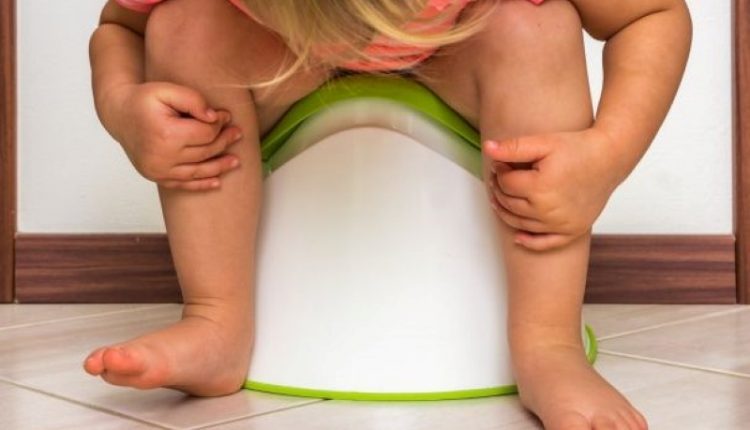
When the baby doesn't poop: constipation
By constipation we mean both a reduction in bowel frequency, both the difficult evacuation of hard stools and the daily evacuation of goat feces
In the majority of cases of constipation in children it is a functional constipation, therefore not associated with an organic disease (celiac disease, hypothyroidism, cystic fibrosis, intolerance to cow’s milk proteins, megacolon or spinal cord abnormalities).
CHILD’S HEALTH: LEARN MORE ABOUT MEDICHILD BY VISITING THE EMERGENCY EXPO BOOTH
Functional constipation, symptoms
Functional constipation may be suspected when the following features are present:
- normal meconium output;
- onset of the transition from breast milk to formulated milk, abandonment of the diaper, insertion in kindergarten;
- absence of vomiting and diarrhea;
- absence of marked reduction in appetite (hyporexia);
- presence of retentionistic attitudes;
- auxological parameters normal;
- non-distended abdomen;
- presence of anal fissures;
- involuntary loss of stools with a tendency to soil the panties (encopresis);
- absence of signs of spina bifida occulta;
- on rectal examination, presence of faeces in the ampoule;
- response to medical treatment.
Children with functional constipation may have recurring abdominal pain, blood-streaked stools (hematochezia), anal fissures, and loss of appetite.
Constipation in children: what to do?
In case of functional constipation it is essential to perform rectal stimulation and in some cases it is necessary to resort to the use of faecal softeners (laxatives), which have the purpose of making the faeces softer and easier to evacuate.
The response to laxatives is individual, therefore it is necessary to tailor the doses.
It is essential not to interrupt the therapy abruptly but, once the habit has been regularized, gradually reduce the drug until it is completely suspended.
To evaluate the effectiveness of the therapy, it is advisable to compile a diary in which to record the evacuations, the characteristics of the faeces, the quantity of the drug and the possible use of enemas.
Obviously, a diet with an adequate supply of fiber and water, encouraging movement and performing appropriate “toilet training” are essential.
Read Also
Emergency Live Even More…Live: Download The New Free App Of Your Newspaper For IOS And Android
Obstructed Defecation: How It Manifests Itself And How To Treat This Form Of Chronic Constipation
Faecaloma And Intestinal Obstruction: When To Call The Doctor
Faecal Colour: Normal And Pathological
Obstructed Defecation Syndrome (ODS): The Inability To Defecate Naturally
Paediatrics: Constipation In Children
Diarrhoea: What It Is, What Can Cause It And How To Intervene
What Is It And What Are The Symptoms Of Traveller’s Diarrhoea?
What Is Montezuma’s Revenge? An Overview Of Traveller’s Diarrhoea
Travel Pathologies: Economy Class Syndrome
Traveller’s Diarrhoea: Tips To Prevent And Treat It
Autoimmune Enteropathy: Intestinal Malabsorption And Severe Diarrhea In Children
Gastrointestinal Disorders Caused By NSAIDs: What They Are, What Problems They Cause
Intestinal Virus: What To Eat And How To Treat Gastroenteritis
Gastrointestinal Bleeding: What It Is, How It Manifests Itself, How To Intervene
Gastroenterology: What Is The Difference Between Gastritis And GERD?
Colonoscopy: What It Is, When To Do It, Preparation And Risks
Colon Wash: What It Is, What It Is For And When It Needs To Be Done
Rectosigmoidoscopy And Colonoscopy: What They Are And When They Are Performed
Ulcerative Colitis: What Are The Typical Symptoms Of The Intestinal Disease?
Wales’ Bowel Surgery Death Rate ‘Higher Than Expected’
Irritable Bowel Syndrome (IBS): A Benign Condition To Keep Under Control
Intestinal Infections: How Is Dientamoeba Fragilis Infection Contracted?
Study Finds Link Between Colon Cancer And Antibiotic Use
Colonoscopy: More Effective And Sustainable With Artificial Intelligence
Colorectal Resection: In Which Cases The Removal Of A Colon Tract Is Necessary
Gastroscopy: What The Examination Is For And How It Is Performed
Gastro-Oesophageal Reflux: Symptoms, Diagnosis And Treatment
Endoscopic Polypectomy: What It Is, When It Is Performed
Straight Leg Raise: The New Manoeuvre To Diagnose Gastro-Oesophageal Reflux Disease
Gastroenterology: Endoscopic Treatment For Gastro-Oesophageal Reflux
Oesophagitis: Symptoms, Diagnosis And Treatment
Gastro-Oesophageal Reflux: Causes And Remedies
Gastroscopy: What It Is And What It Is For
Colonic Diverticular Disease: Diagnosis And Treatment Of Colonic Diverticulosis
Gastro-Oesophageal Reflux Disease (GERD): Symptoms, Diagnosis And Treatment
Diverticula: What Are The Symptoms Of Diverticulitis And How To Treat It
Irritable Bowel Syndrome (IBS): A Benign Condition To Keep Under Control
Gastroesophageal Reflux: Causes, Symptoms, Tests For Diagnosis And Treatment
Non-Hodgkin’s Lymphoma: Symptoms, Diagnosis And Treatment Of A Heterogeneous Group Of Tumours
Helicobacter Pylori: How To Recognise And Treat It
A Baby’s Gut Bacteria May Predict Future Obesity
Sant’Orsola In Bologna (Italy) Opens A New Medical Frontier With Microbiota Transplantation
Microbiota, The Role Of The ‘Gate’ That Protects The Brain From Intestinal Inflammation Discovered
What Are The Differences Between Diverticulitis And Diverticulosis?
When Is A Colonoscopy With Biopsy Necessary?
What Is Gastro-Oesophageal Reflux And How To Treat It
Vomiting Blood: Haemorrhaging Of The Upper Gastrointestinal Tract
Pinworms Infestation: How To Treat A Paediatric Patient With Enterobiasis (Oxyuriasis)
Intestinal Infections: How Is Dientamoeba Fragilis Infection Contracted?
Diarrhoea: Causes And What To Eat



